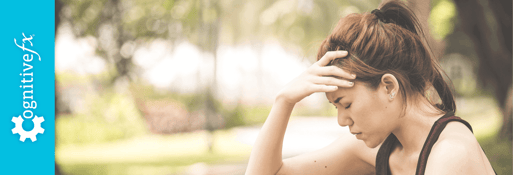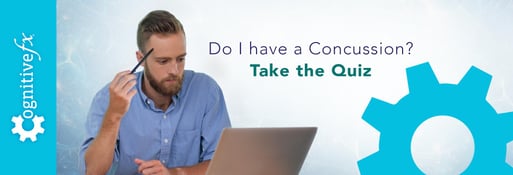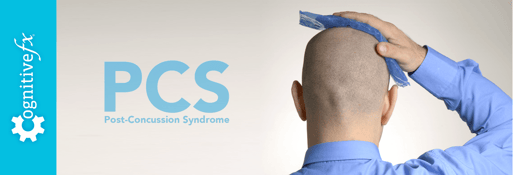Many people who have a concussion suffer from some kind of vision problem as a result of the concussion. However, except for “blurry vision” or “sensitivity to light,” the vision problems people often experience after head trauma are not usually listed among the most common concussion-related symptoms. These symptoms are often overlooked and left untreated, or they are not treated as effectively as possible.
Here are a few of the visual symptoms (called post-trauma vision syndrome by some providers) we’ve seen in our patients:
- Blurred vision
- Difficulty focusing
- Difficulty reading
- Light sensitivity (photophobia)
- Problems with peripheral vision
- Problems with visual perception
- Problems with motion.
For some patients, their vision only blurs after viewing a computer screen or some other electronic device. Sometimes these vision problems cause other concussion symptoms, such as dizziness, balance problems, and headaches. For example, you might experience headaches when shopping in a store with fluorescent lighting.
In this post, we’ll answer some common questions about vision problems after a concussion. Here’s the list of questions we answer:
We’ll also introduce you to some of our patients who had concussion-related vision problems and who found relief from them and other symptoms through treatment at our clinic.
Note: If you've experienced one or more concussions and your symptoms (including vision problems) persist, you're not alone — and you're not imagining it. Help is available. Peer-reviewed research shows that 77% of patients treated at Cognitive FX experienced significant improvement in their post-concussion symptoms. Cognitive FX is the only post-concussion treatment clinic with third-party validated outcomes. To see if you are eligible for treatment, schedule a consultation.
Can a Concussion Cause Vision Problems?
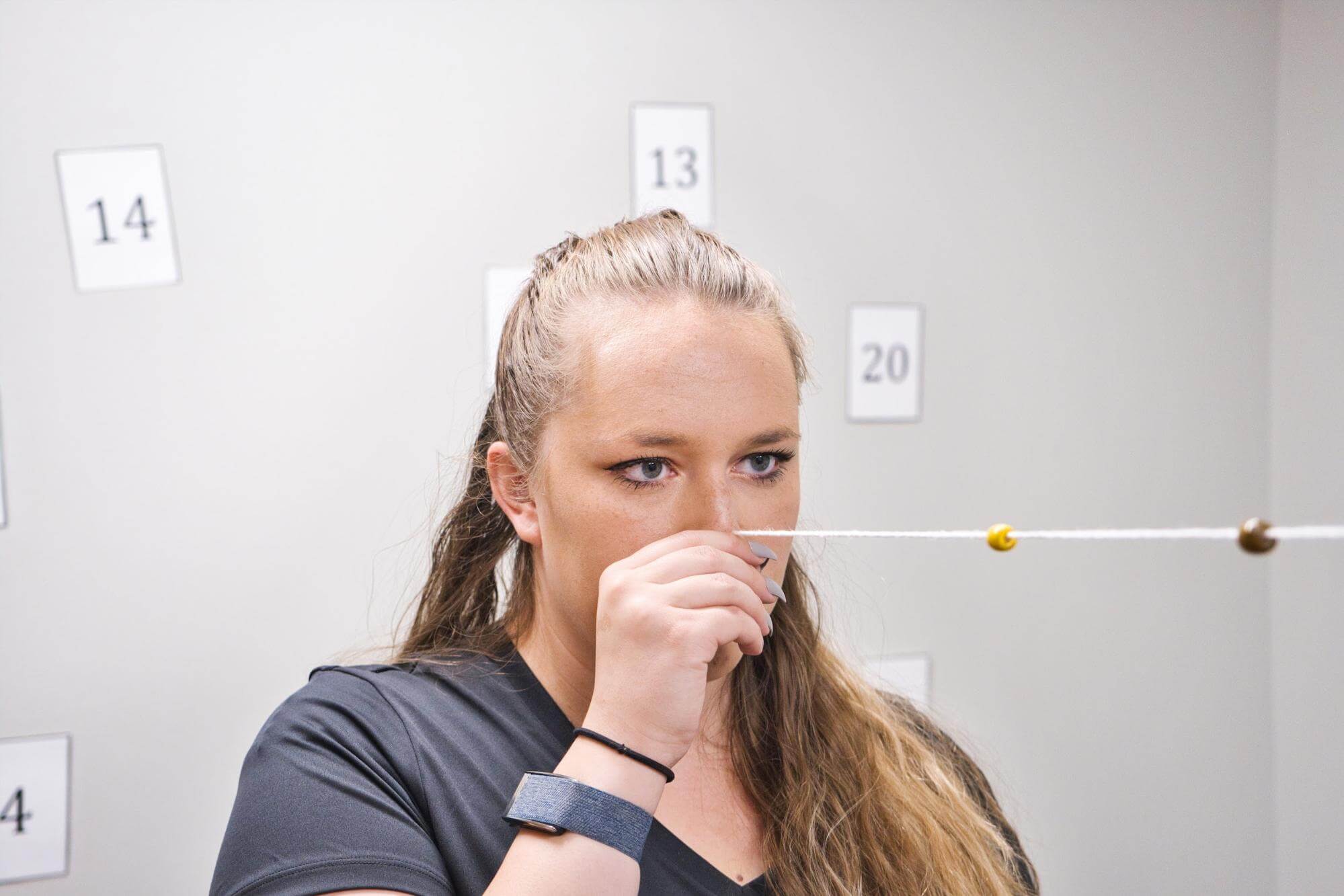
A concussion can cause temporary or long-lasting vision-related symptoms. Sometimes, people think the deficit is in their eyes. While some severe injuries could cause permanent damage to the optic nerve, it’s more likely because of a communication problem between the brain and the eyes resulting from the injury.
If you want to understand the science behind why concussions cause the symptoms they do, we recommend reading our guide to post-concussion syndrome.
In brief: Regions of the brain that were damaged by the injury may function the way they should due to dysfunction in the relationship between those neurons and the blood vessels that supply them with oxygen and other nutrients. Your vision can also be affected by post-concussion autonomic dysfunction. The end result is that the brain does a poor job of processing visual information, leading to your visual symptoms.
Sometimes these problems don’t appear immediately after the injury but slowly develop over time, or they only become evident under stressful conditions. Everything from eye movement to peripheral awareness can be affected.
What Are the Symptoms of Post-Concussion Vision Problems?
Many different types of eye-related problems and accompanying symptoms can arise after a concussion. Some of the most common issues include:
1. Focusing Issues
If your eyes don’t focus quickly and easily, you might have these problems:
- Blurry vision
- Headaches
- Eye pain or eye strain
- Impairment of reading comprehension
- Inefficient performance at school or work
- Fatigue
2. Eye Teaming
If your eyes don’t converge correctly (including convergence insufficiency), you might have these problems:
- Double vision
- Poor depth perception
- Suppression (the vision in one eye turns off)
- Strabismus (one eye turning in or out)
- Fatigue
- Headaches
- Eye pain
- Poor reading comprehension
3. Depth Perception
If your eyes can’t judge distances or the location of objects in relation to each other correctly, you might have these problems:
- Clumsiness
- Inability to see three-dimensionally
- Difficulty driving a car or riding a bicycle
- Difficulty walking up or down steps
4. Eye Tracking
If your eyes aren’t tracking properly, or moving accurately and easily from place to place, you might have these problems:
- Losing your place while reading
- Skipping small words while reading
- Difficulty copying words and information
- Problems with eye-hand coordination
- Difficulty following moving objects in sports
5. Overactive Peripheral Vision
If your brain is paying attention to too much of the activity in your peripheral vision, you might have these problems:
- Headaches, dizziness, and/or nausea in crowds or visually busy spaces
- Feeling overwhelmed in grocery stores
- Motion sensitivity
6. Underactive Peripheral Vision
If your brain is paying attention to too little of the activity in your peripheral vision, you might have these problems:
- Reduced visual field
- Inability to catch important details
- Difficulty with movement
- Increased chance of collision
It is rare for concussion patients to experience vision loss or significant visual field loss after a concussion. These conditions are associated with more direct eye trauma or severe traumatic brain injury.
Will My Vision Problems Get Worse over Time?
-1.jpg?width=1000&name=image5%20(3)-1.jpg)
If you are having post-concussion visual symptoms, they may stay stable. But it’s also possible they will worsen over time. Sometimes patients only notice vision problems when they are experiencing some kind of additional stressors — such as illness, family or work stress, or going outside of their normal routines.
That said, any concussion symptom can get worse over time. If that happens to you, it’s important to get treatment sooner rather than later so you can stop the negative spiral of symptoms that feed into each other and make each other worse.
How Long Does It Take for Post-Concussion Vision Problems to Go Away?
-1.jpg?width=1000&name=image7%20(1)-1.jpg)
Symptoms from a concussion usually go away within a couple of weeks of the injury. If it’s been more than six weeks since your injury and you are still having vision problems, it’s very unlikely that the problems will resolve on their own without vision rehabilitation.
Neuro-optometric rehabilitation often takes several months to take effect. Some patients only need two to three months, whereas others might need six. It all depends on what’s causing your symptoms and how responsive your brain is to therapy.
Can a Concussion Make It Difficult to Read?

Many patients suffering from post-concussion syndrome have reading difficulties after their injury. Words might be blurry or appear to move around on the page. Some patients only have trouble reading fine print or reading on an electronic device. Sometimes their vision starts to blur or double, or their eyes begin to feel tired after they’ve been reading for a while. Another common problem is not being able to remember what they just read, even after rereading it several times.
Reading problems after a concussion aren’t just related to the eyes. Attention, memory, and mental clarity all play a part as well. Here’s some more reading about these consequences of brain injury:
Can My Regular Optometrist Help Me Recover?
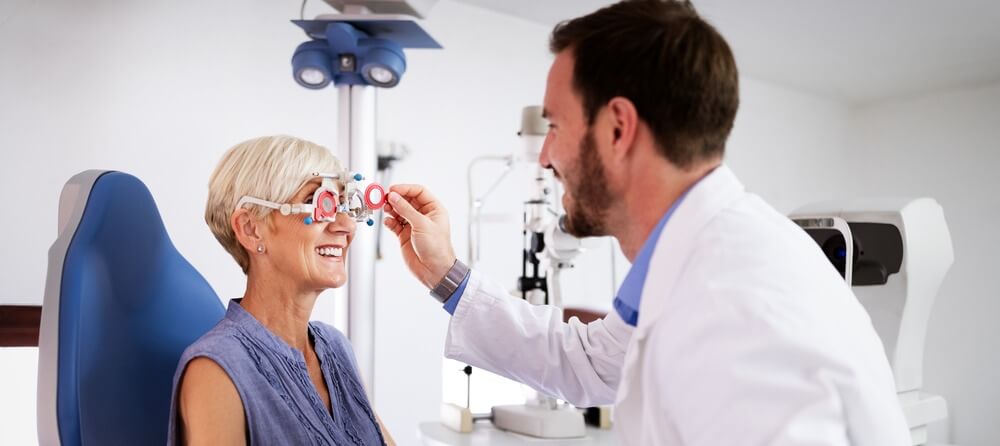
Optometrists and ophthalmologists are medical doctors qualified to examine and treat eyes. Since they’re responsible for normal eye care, many people like to bring up their concussion symptoms during an eye exam. However, if you’re having visual problems after a concussion, the problem often isn’t with your eyes’ physical integrity.
Many times, our patients have been told by their eye doctor that since their visual acuity (how sharp your vision is) is fine, then there’s nothing they can do for them. Most patients have better success at an optometry practice with a neuro-optometrist. These medical specialists can offer treatments such as special glasses for concussion or vision therapy.
In our experience, while vision therapy is often necessary to help resolve visual symptoms, it’s only a part of the puzzle. If you have persistent concussion symptoms beyond just vision problems, it will take a multidisciplinary approach to resolve those symptoms.
Is My Dizziness from Post-Concussion Visual Dysfunction?
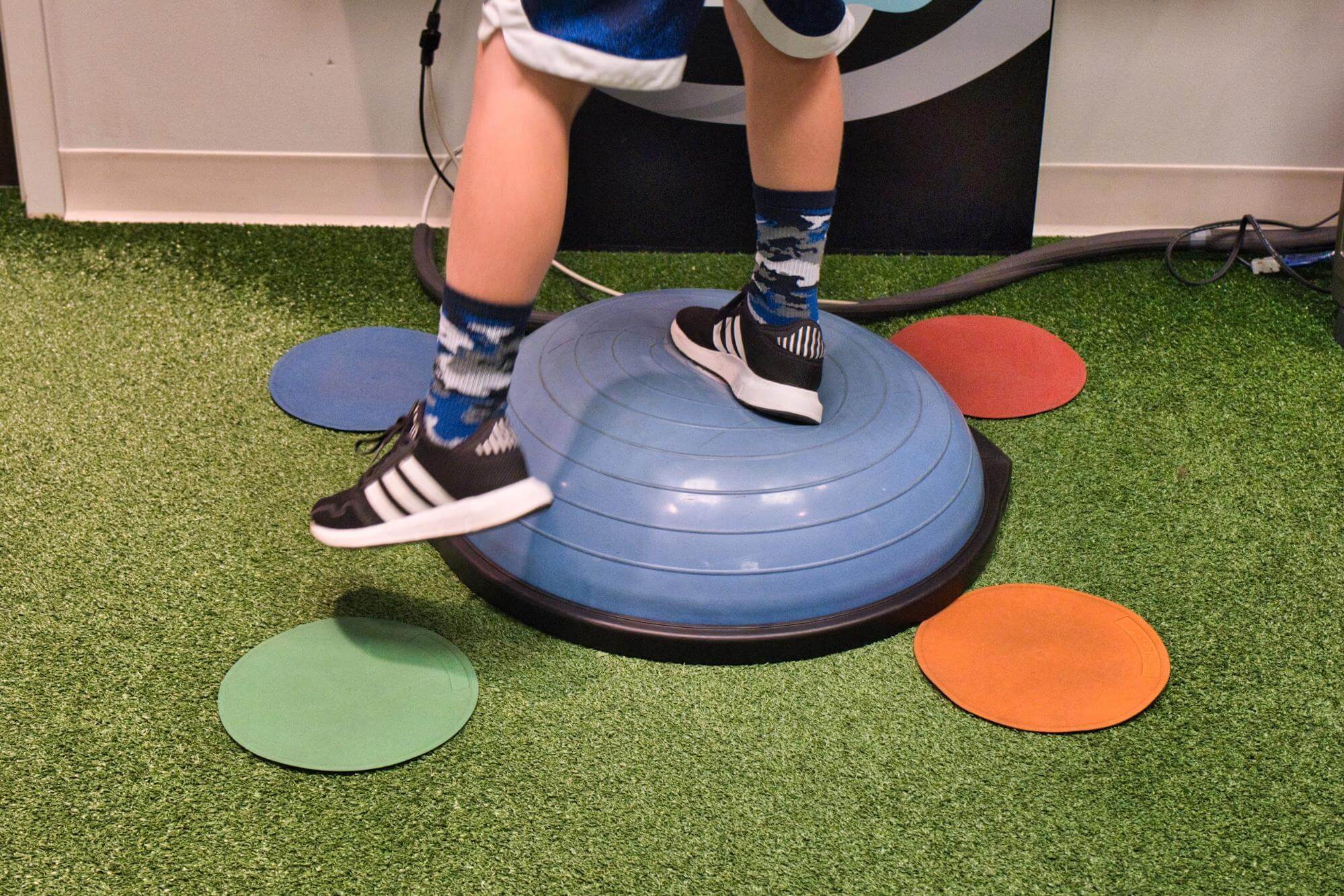
Post-concussion dizziness could be caused by visual symptoms, autonomic nervous system dysfunction, vestibular dysfunction (affecting balance and spatial orientation), or some combination of those issues. You can read more about post-concussion dizziness causes and treatment options via the provided link.
For example, your dizziness might be related to vision if you feel dizzy during saccades exercises (rapidly switching focus between two pencil tips, for example). If you have dizziness or disorientation while tilting your head, it’s likely vestibular. If you’re dizzy after exercising, it’s likely from autonomic dysfunction (but could also involve vision and vestibular).
Fortunately, there is therapy available for both vision and vestibular issues. When patients don’t sufficiently improve in one or both, it may be because most providers do not combine the two. The vestibular and visual systems sometimes need help to work together well after a concussion. The body, vestibular system, and visual system all send information to the brain. The brain needs to receive consistent information from each; if there’s a mismatch, then you’ll typically experience symptoms because the brain doesn’t quite understand your position relative to your environment.
If you have problems with both vestibular and vision function, then you will likely benefit from neurointegration therapy, which helps both of those systems work well together with the brain. It is one of the treatment options we offer at Cognitive FX.
Further reading: Vestibular therapy after a concussion
What Treatment Options Are There for Post-Concussion Ocular Issues?
-2.jpg?width=1999&name=image4%20(1)-2.jpg)
Some patients who come to us with post-concussion vision problems have been prescribed prism glasses to try to correct a vision problem. Others wear eye patches. Lens filters may help with light sensitivity.
Vision therapy is usually the best option. It consists of supervised eye exercises designed to strengthen certain visual skills. It helps both the eye muscles that may need to be retrained and the brain regions which process visual information.
At Cognitive FX, we believe in taking a holistic approach. Patients undergo multidisciplinary therapies, including vision and vestibular therapy, to address the root causes of concussion damage. In the next section, we’ll explain a bit more about what that entails.
EPIC Treatment: A Better Way
We believe that instead of treating individual symptoms in isolation, the best treatment plan tackles the source of the problem and resolves multiple symptoms at once. The goal is to get the brain and its operation closer to optimal functioning for each patient.
EPIC Treatment at Cognitive FX is an intense, individualized program designed to treat each patient’s specific needs and symptoms. Every patient receives a Functional Neurocognitive Imaging scan (fNCI, a type of functional MRI) at the beginning of treatment, which shows our team which regions of the brain to prioritize for treatment. A follow-up fNCI at the end of the treatment provides an objective comparison to see how brain function is adjusting. Patients are then sent home with a personal post-care plan to continue improvements at home.
To address concussion-related vision problems, we incorporate Dynavision, visual tracking exercises, the Brock String, and some other computerized technologies. We also employ neurointegration therapy, which helps the brain, vision, and vestibular system to work together harmoniously.
Dynavision is a computerized light board. Patients have to locate buttons as they light up at random on the board and use their hands to tap the lights and put them out. We tailor the specific exercises you do based on your fNCI results and what vision problems you’re having.
.jpg?width=1999&name=image8%20(2).jpg)
Another vision therapy technique that we use at Cognitive FX is the Brock String test for visual perception problems. Using this tool can help retrain the eyes to work properly if they have convergence issues. It’s also an exercise that patients can use at home without having to visit a practitioner’s office weekly.
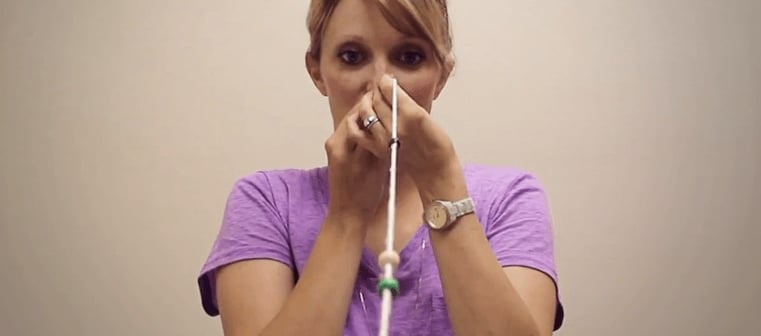
Keep in mind that we can’t solve all vision issues in just one week. While we’re able to make significant progress with the regions of the brain governing vision, some patients will need extra help with vision when they go home. We’ll either refer you to a specialist in your hometown or send you home with specific exercises to help with the problems you’re facing.
In addition to these strategies to help vision, we offer therapies such as:
All these therapies work together to combat the root causes of persistent concussion symptoms to promote a more full recovery.
Post-Concussion Syndrome Vision Recovery Stories
-2.jpg?width=1999&name=image3%20(1)-2.jpg)
Want to know what our patients experience? Here are five stories of patients who had post-concussion syndrome — including vision problems and other common symptoms.
Hayley’s Story: Elite Volleyball Player Recovers from 4 Concussions
Hayley sustained four concussions in her career as an elite collegiate and U.S. National Volleyball Team player. However, she didn’t immediately attribute the many debilitating symptoms she was experiencing to those concussions because they didn’t appear right away. She suffered from a host of typical concussion symptoms: insomnia, headaches, dizziness, vision problems, balance issues, and cognitive processing difficulties.
Hayley came to believe these symptoms resulted from returning to play too quickly after her concussions, and she medically retired from volleyball. Many of those symptoms then stabilized, but she was still living with cognitive and processing issues, fatigue, sleep problems, and migraines. She sought help from numerous doctors from a variety of disciplines, but she didn’t find much relief except through medication. However, life-long medication was not a treatment option she wanted to accept.
Additional reading: What it’s like living with post-concussion syndrome
A close family friend encouraged Hayley to try treatment at Cognitive FX. She was immediately impressed by the support of the staff and felt relieved to be understood. She was also encouraged by Cognitive FX’s belief that “no symptom is too small and no concussion is too old to be treated,” she said.
The doctors and therapists at Cognitive FX create an individualized treatment plan for each patient based on the results of the initial fNCI and other assessments. In Hayley’s case, for example, the scan showed that her visual mechanism was fine, but that there wasn’t enough blood flow going to the part of her brain that does visual processing. This explained why reading had become so difficult for her.
“My brain would get so tired that it would just sort of give up, because it was just too much for my brain to try to process what it was seeing and what it was supposed to be understanding,” she said.
Hayley refers to the difficult week of treatment at Cognitive FX as “Brain Boot Camp.” She experienced symptoms that she hadn’t had in months as the connections in the brain were being reestablished throughout the week. She felt as if her brain “rebooted” near the end of treatment, and she experienced one of the worst migraines she’d ever had. However, on the last day of treatment, as the headache receded, she realized that her visual processing, cognitive processing, and verbal reasoning were becoming more and more clear throughout the day.
Her feelings were validated when the fNCI she received on the last day of treatment showed that blood flow to the part of her brain that performs visual processing had gone from nearly zero to almost perfect.
Hayley summed up her feelings at the end of treatment by saying, “I am hopeful. I am amazed. I am a bit confused. I’m not really sure how all of this works, but it does! It’s incredible that they understand brain injuries and are working so hard to support people with brain injuries in a non-invasive and non-medicated manner. We have a long way to go as a country, especially in sports, in dealing with brain injury — in recognizing and treating and supporting people that have invisible injuries and ‘seem fine.’”
Want to get help from the team that worked with Hayley? Sign up for a consultation.
Kathleen’s Story: “What Would You Give to Have Your Brain Back?”
Kathleen lived the life of a typical full-time mom before her injury. She was busy with her children, schoolwork, and errands. After her accident, she felt like she was living under a cloud. She suffered from mental confusion. It took all of her energy to carry on a simple conversation. Her vision was blurry, her balance was “horrendous,” and she was emotionally unstable. “It was not great!” she said.
Treatment at Cognitive FX was not easy for Kathleen. “The first three days were kind of a living hell,” she admitted. In fact, she almost didn’t go back for the fourth day of treatment. She had noticed some improvements on Wednesday — she felt the fog had lifted and her mental processing was better — but she was absolutely spent and exhausted.
However, on Thursday, she woke up and noticed her vision was back. She said, “I saw clear lines. I saw straight edges. They weren’t fuzzy anymore; they were clear.” She wasn’t tired anymore. Not only that, she was able to do yoga poses that she hadn’t been able to do since before her accident. She could control her emotions. Instead of snapping right away, she found she was able to slow herself down and speak logically. “The progress I made was astounding,” she said.
The improvement in her symptoms was so amazing that Kathleen feared it was too good to be true. She feared regression after treatment. However, the staff at Cognitive FX remained positive and encouraging, assuring her that she would keep the gains she’d made. Even though she still has a few lingering symptoms, she trusts the progress she’s made, and she’s hopeful for the future.
Kathleen praised the Cognitive FX staff for helping her through the treatment. “They push you, but they know where your limits are, and they’re very supportive,” she shared.
Kathleen says that treatment at Cognitive FX was a really good experience, but it was also “one of the hardest things I’ve ever done in my life,” she admitted. “However, it had the biggest payoff. I mean, what would you give to have your brain back?”
Jamie’s Story: Recovering from a Professional Skiing Accident
Jamie went from being a professional skier, traveling around the world to compete, to having to relearn how to do everything — even how to swallow water and walk — after a life-threatening accident during a competition. Her life and focus changed dramatically as she realized she was not going to be able to go back to being a professional skier, and she had to figure out what to do next.
Four years after her traumatic brain injury (TBI), Jamie came to Cognitive FX for treatment. One of the things she really liked about the treatment was the challenge of having to multitask during all of the therapies. For example, during the Dynavision therapy, she had to hit lights with her hands as they lit up on the board, while standing on a Bosu balance trainer. “To be able to do all those things at once was really challenging for me, and I like to be challenged,” she said. “So, I really enjoyed actually pushing my mind.”
Another therapy she had never done before involved lights flashing on opposite walls. Not only was she required to hit the lights as she ran back and forth, but she was assigned to hit only certain colored lights with each hand. “I had to think of all that while I was sprinting back and forth, hitting the lights,” she recalled. “It was really cool to work multiple things in my brain at the same time.”
The focus on engaging cognitive skills was something that Jamie also appreciated. The results of her fNCI indicated that certain areas of her brain weren’t working as efficiently as they should, and the therapies she underwent were specifically targeted to improve those areas. Cognitive skills were something she had been neglecting.
At the end of treatment, Jamie felt as if she had been improving and making progress, but she was afraid the follow-up fNCI wouldn’t scientifically prove it. She started crying when the before and after results showed dramatic improvement. She admitted, “I didn’t think it would be emotional, but it meant so much to me that I improved that much after just one week.”
It was validating to see the evidence of improvement in her affected neuropathways on the scan, but she also noticed improvements in her daily life in areas such as word retention. She explained, “If I think of a word, and I’m blocked on it, instead of it going farther away, it will come back to me, and I’ll remember it.”
She’s also noticed that she’s better at making plans and following the shifts of conversations. “Everyone around me has actually seen some of the changes since I came to the boot camp,” as she calls Cognitive FX.
Jamie is now busy finishing her education and working as a talk show host on the Brain Injury Radio Network. Her new passion is being a motivational storyteller.
“I’m pretty excited that I did this at this time, because I feel like I can make steps in the career paths I want to go in, and I can make it much more efficiently and easily because I went to Cognitive FX.” She added, “And I would recommend it to just about anyone who’s had a brain injury. Don’t just settle. Come heal.”
Want to get help from the team that worked with Jamie? Sign up for a consultation.
Angela’s Story: From Helpless to Hopeful
“Life before Cognitive FX was extremely hard,” Angela said. After her concussion, she suffered from nausea, dizziness, and constant fatigue. She had vision problems; she couldn’t read. She was unable to work for a year. She felt frustrated, helpless, and alone, and often felt like she was going crazy. “Every day was a struggle,” she added.
Additional reading: Emotional symptoms after a concussion
All of that changed with treatment at Cognitive FX. Angela warns future patients that the days of treatment were hard and long, but she adds that it was completely worth it in the end. “This is an amazing place that offers hope, comfort, and excitement. The people that you will meet in treatment are phenomenal.”
By day two of treatment, her vision was better, she could read better, and she was able to memorize better. By the end of the week, almost all of her symptoms had gone away. She realized, “I am not tired. I feel like I’ve got energy. I can see clearer. I can see more around me, whereas before, my peripheral vision was extremely bad.”
The gains she made during treatment have given Angela hope for the future. She’s excited about going back to work, school, and being a mom to her kids. She’s looking forward to ordinary things such as being able to go to a crowded, noisy restaurant without wearing sunglasses, being able to read the menu, and just hanging out with friends.
Angela has this advice for others who are suffering from post-concussion symptoms: “If you can get here, get here! Do whatever you can! There is hope; there is a place that will love you; there is a place that knows exactly how to treat you!”
Hannah’s Story: Getting Back to the Life She Wanted
Before coming to Cognitive FX, Hannah had lost hope of ever getting better. Her goal had been just to be able to function “well enough.” She had really bad vision problems right after her head injury. Light of any sort was “distorted” in her vision. A naturally social person, she didn’t feel like herself. Social situations became difficult and frustrating, which only added to the stress of dealing with a concussion.
She met with 15 different doctors both in Norway, where the injury happened, and in the U.S., but they all had different opinions and ideas about treatment. Some told her she had to put her life completely on hold for a year to go to appointments three times a week. Many wanted to treat her with medication alone. But Hannah didn’t want to mask her symptoms; she wanted a true cure.
Hannah heard about Cognitive FX from a couple of friends who had completed treatment at Cognitive FX with amazing results. They assured her that even though the results sounded almost too good to be true, the treatment really did work, and patients are taught the skills they need to continue to make progress at home. This was just what Hannah was looking for.
During treatment, Hannah appreciated that the specialized therapists used the results of her fNCI to develop treatments that were tailor-made for her brain and its specific injuries. She said that an added benefit was that most of the treatments had a fun edge to them instead of just being painful as they had been elsewhere.
After her treatment, she noticed significant improvement and felt so much better that she had “100% faith” she would return to being truly herself again. “I’m excited to get back to school and work and go back to life as I wanted it to be, instead of letting my concussion hold me back,” she said.
Note: If you've experienced one or more concussions and your symptoms (including vision problems) persist, you're not alone—and you're not imagining it. Help is available. Peer-reviewed research shows that 77% of patients treated at Cognitive FX experienced significant improvement in their post-concussion symptoms. Cognitive FX is the only post-concussion treatment clinic with third-party validated outcomes. To see if you are eligible for treatment, schedule a consultation.

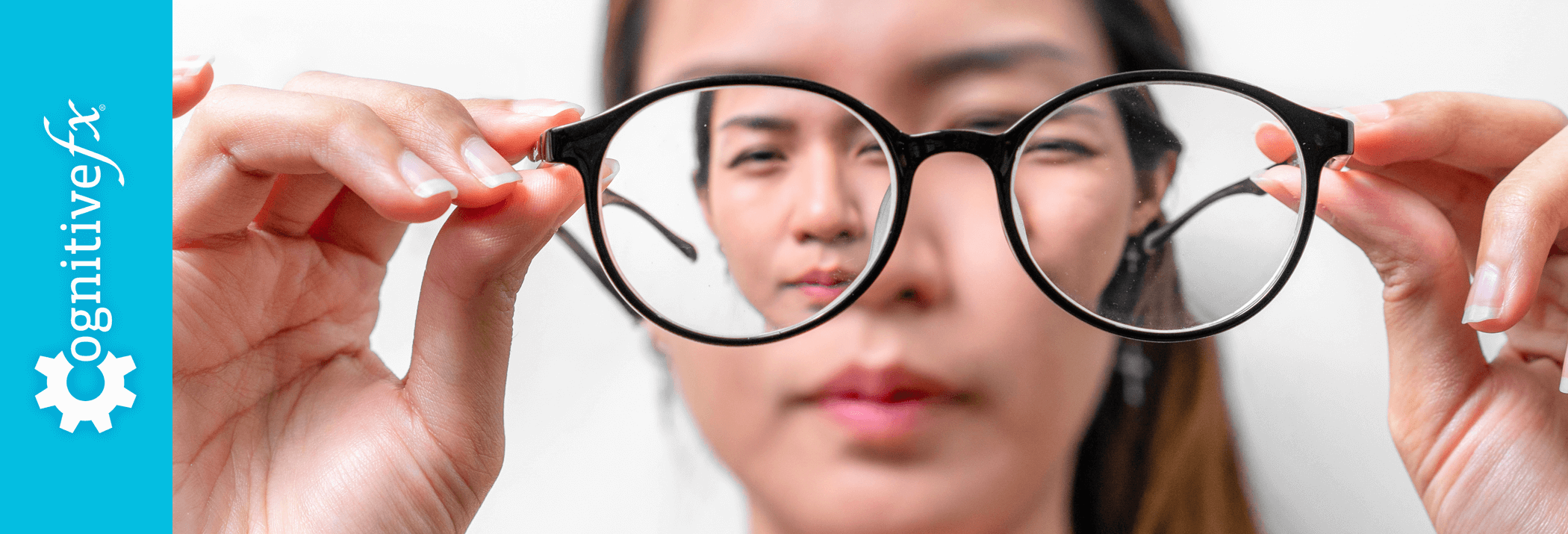

-1.jpg?width=1000&name=image5%20(3)-1.jpg)
-1.jpg?width=1000&name=image7%20(1)-1.jpg)



-2.jpg?width=1999&name=image4%20(1)-2.jpg)
.jpg?width=1999&name=image8%20(2).jpg)

-2.jpg?width=1999&name=image3%20(1)-2.jpg)



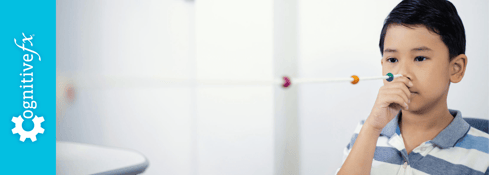

.png?height=175&name=Vision%20Problems%20After%20COVID%20Causes%20and%20Treatment%20(1).png)
